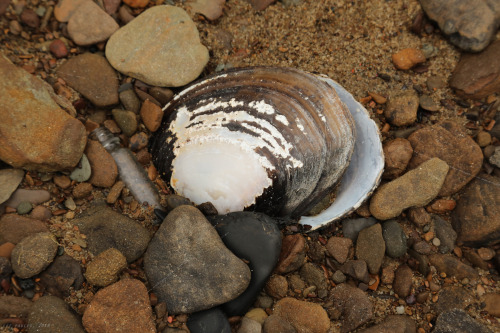vandaliatraveler:At one time in the not-so-distant past, Dunkard Creek was regarded by biologists an
vandaliatraveler:At one time in the not-so-distant past, Dunkard Creek was regarded by biologists and local fishermen as one of the most bio-diverse streams in North-Central West Virginia and Southwestern Pennsylvania. Like many of Appalachia’s fast-running, rocky-bottomed mountain streams, this serpentine tributary of the Monongahela River harbored a rich diversity of freshwater mussel species and other, more unusual aquatic life, such as the mudpuppy and the hellbender, one of the world’s largest salamander species. It was also considered a premier musky stream by the fishermen who ran their jon boats up and down its length. But Dunkard Creek, surrounded by numerous old mines, sediment ponds, and fracking sites, was living on borrowed time. In August 2009, a release of briny mining waste from Consol Energy’s Blacksville No. 2 led to a deadly golden algae bloom that killed more than 42,000 fish, 15,000 freshwater mussels and 6,000 hellbenders. A 35-mile stretch of the stream was rendered lifeless. A full reckoning of the event is documented here. In the wake of this environmental catastrophe, a local botanical artist and nearly 90 of her colleagues contributed art to an exhibit commemorating the many tens of thousands of creatures that perished so abruptly that summer. In the decade since the spill, Dunkard Creek has recovered steadily, but it will likely never replace its original bio-diversity. During my visit to the Mason-Dixon Historical Park over the weekend, I noted at least a partial recovery of the freshwater mussel population - a telltale sign of improving water quality. The tough lessons from Dunkard Creek are all the more poignant now as other streams in Appalachia - such as the Clinch River - are showing puzzling signs of declining bio-diversity. -- source link
Tumblr Blog : vandaliatraveler.tumblr.com




